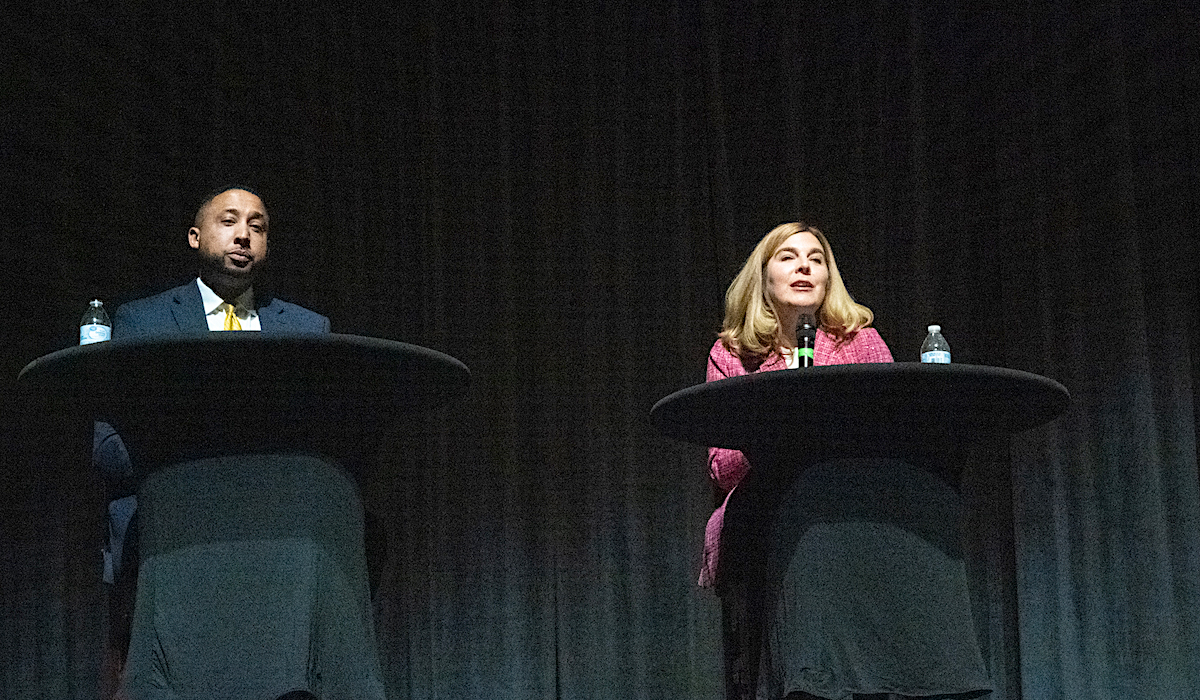

I recently had the opportunity to delve into an article from NonDoc discussing the debate for Oklahoma House District 39, which included a question centered around the enrollment challenges at the University of Central Oklahoma. The candidates — Erick Harris, Regan Raff and Richard Prawdzienski — engaged in a thoughtful discourse regarding the impact of state budget cuts on UCO’s enrollment, a topic close to my heart owing to my prior role as a vice president overseeing enrollment efforts at the institution.
What struck me most about this debate topic is the larger issue of the impending enrollment cliff facing higher education as a whole. This problem arises from declining birth rates over the past couple of decades, leading to fewer prospective students entering colleges and universities. Additionally, despite an increase in the diversity of high school graduates, many students from underrepresented backgrounds are less likely and, in many cases, because of their poor schools are less prepared to pursue higher education. This contributes to an overall decrease in college attendance rates, particularly in regions like the Midwest, where Oklahoma is located.
The data provided by the Oklahoma State Regents for Higher Education paint a stark picture of the situation, showing significant enrollment declines at both regional four-year institutions and two-year colleges over the past decade. Notably, UCO has experienced a substantial decrease in enrollment during this period. These statistics underscore the urgent need for strategic leadership and innovative solutions to navigate the challenges posed by declining enrollments.
RELATED
HD 39 candidates discuss UCO’s future and finances by Joe Tomlinson
A key distinction arises when comparing regional and two-year institutions with their research-focused counterparts. While research institutions benefit from greater resources and prestige, enabling them to attract students from both in-state and out-of-state, regional institutions face a different reality. They primarily rely on state appropriations, tuition and fees for revenue, a model that has become increasingly precarious as the share of overall costs covered by state funding dwindles. This reality is evident in Oklahoma with the research universities, Oklahoma State University and the University of Oklahoma. These institutions have their own unique challenges, but they are not the same.
During my tenure at UCO in the early 2000s, I witnessed firsthand the institution’s reliance on state funding, which constituted approximately 65 percent of its budget initially, dropping to 50 percent by 2008, and now hovering around 25 percent as of the latest report in 2023. This shift toward increased reliance on tuition and fees has placed a heavier financial burden on students, particularly those from first-generation, low-income and other underserved backgrounds. While UCO succeeded in attracting students at the start of the millennium, increased tuition and fee costs eventually led to high attrition after the first or second year for these students, especially following significant declines in state appropriations post-Great Recession. I am sure the current leadership is encountering the same issue.
Follow NonDoc’s Edmond coverage
Embracing innovative operational strategies
To address these challenges effectively, institutions such as UCO have implemented various strategies, including tuition discounting. While historically employed by private institutions, tuition discounting entails offering scholarships based on merit or financial need to attract prospective students. However, this approach necessitates meticulous budget management to ensure sustainability and prevent an over-reliance on tuition revenue. Achieving this balance is crucial for the success of institutions employing this strategy. Public institutions are beginning to become more strategic in monitoring and administering this process, but it remains a financial and leadership challenge.
Like many institutions, UCO utilizes scholarships to recruit students based on merit or high school academic achievement. However, owing to limited budgets, regional and two-year institutions can face challenges in competing with research institutions to attract top-performing students. Therefore, it’s essential to adopt a strategic approach in identifying the most promising prospective students within the constraints of the scholarship budget.
Furthermore, during my time at UCO, I advocated increasing support for students with significant financial need. These students often represent the core of Oklahoma’s population and are more likely to contribute to the state’s economic development post-graduation by remaining in the state. Therefore, investing in their education is paramount. Neglecting to do so could lead to attrition and leave them burdened with substantial debt after only two years of enrollment, a scenario that should be avoided at all costs. Our primary goal should be to ensure these students successfully graduate and contribute positively to their communities.
As this trend continues, it’s imperative for institutions like UCO and its peers to strike a balance between attracting high-achieving students through merit-based scholarships and providing adequate support to students with financial need. By doing so, we can fulfill our mission of fostering academic success and positively impacting our local communities.
Beyond tuition discounting, some institutions have successfully adapted to the changing landscape in other ways. Southeastern Oklahoma State University, for instance, has embraced online education, catering to working adults seeking to advance their careers. The data highlight that Southeastern has outperformed its peers, increasing enrollment by instituting this strategy several years ago, particularly in its aviation programs. It is not a guaranteed fix, and like all strategies, it requires financial investments which certainly incur risk.
Institutions such as Georgia State University have implemented targeted support programs to assist first-generation, low-income and academically underprepared students, demonstrating a commitment to enhancing student success and institutional resilience. By recognizing the diverse characteristics and needs of their student body, these institutions have developed tailored strategies and support systems to address specific challenges faced by these students.
Such efforts have led to improved student retention rates and increased tuition revenue. Despite the risks, institutions must embrace strategic interventions to foster student success and ensure long-term sustainability in higher education, as reluctance may harm both outcomes and viability. At UCO, we created the Black Male Initiative, which received national recognition for employing an approach similar to what was used at Georgia State.
Regional and two-year institutions are vital contributors to Oklahoma’s economy and social mobility. However, their ability to fulfill this role is threatened by declining enrollments and financial constraints. It is imperative for state leaders to prioritize higher education funding to ensure accessibility and affordability for all students. Additionally, institutional leaders must continue to innovate and adapt to secure the future of higher education in Oklahoma.
The election win by now-Rep. Erick Harris presents an opportunity for him to collaborate with UCO and state system leaders to better understand and address the declining college enrollment and graduation rates. The future of the state of Oklahoma depends on this work and collaboration.





















